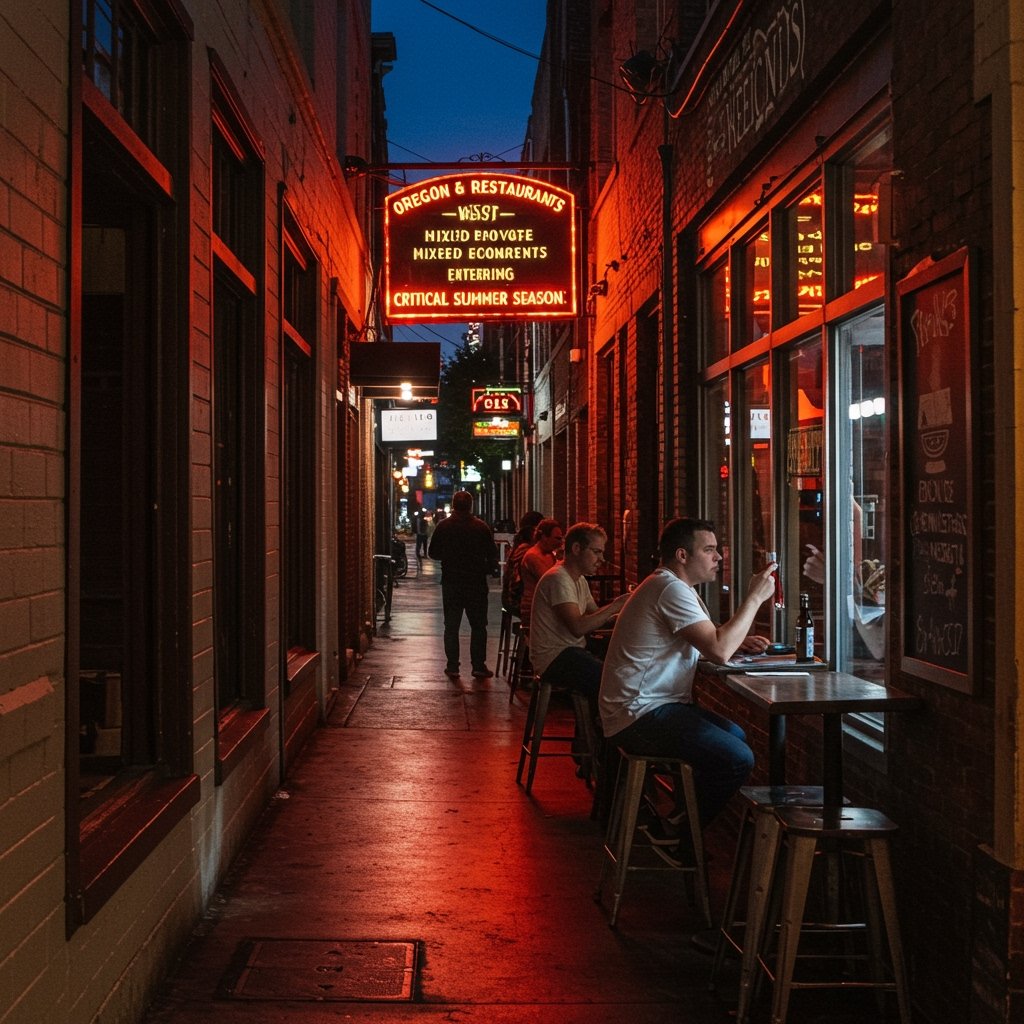State Report Reveals Varied Economic Landscape
A comprehensive new report released today by the Oregon Economic Analysis Office paints a picture of a complex and varied economic landscape for the state’s bar and restaurant sector as it approaches the crucial summer season. The analysis indicates that while certain metrics show improvement, significant challenges persist, creating a mixed outlook for establishments across Oregon.
According to the report, the sector experienced a modest overall sales increase of 2.8% year-over-year through May 2025. This growth suggests continued consumer spending and a degree of recovery or expansion compared to the previous year. The positive sales trajectory provides a foundational element for optimism among business owners hoping for a prosperous summer.
Persistent Labor Shortages Hamper Operations
Despite the uptick in revenue, the report highlights ongoing and significant challenges, primarily centered around labor availability. Labor shortages continue to be a major impediment to full operational capacity for many bars and restaurants. The state’s analysis shows that employment figures within the sector remain approximately 6% below early 2020 levels. This shortfall indicates that businesses are still struggling to staff appropriately, potentially leading to reduced operating hours, limited service offerings, or increased strain on existing employees.
The difficulty in finding and retaining staff has been a consistent issue since the disruption of the early 2020 period and continues to be a primary concern for the industry. The persistent gap between current employment and pre-pandemic levels underscores the depth of this challenge, impacting everything from customer service speed to the ability of establishments to handle peak season demand effectively.
Rising Costs Squeeze Profit Margins
Adding to the complexity, the report notes the significant impact of rising operational costs. The price of supplies and utilities has been increasing, directly affecting the cost of doing business for bars and restaurants. These elevated expenses represent a considerable challenge, particularly for independent operators and smaller establishments with less margin to absorb increased costs.
Industry leaders have been vocal about these pressures. The Oregon Restaurant & Lodging Association, a key representative body for the sector, has specifically voiced concerns regarding how these rising operational costs are impacting profitability. Even with the observed increase in revenue, the higher expenses for essentials like food ingredients, beverages, energy, and other supplies are eroding potential profits. This situation creates a scenario where businesses may be generating more top-line revenue but finding it difficult to translate that into sustainable bottom-line profitability.
Summer Tourism Offers Potential Boost
Looking ahead, the Oregon Economic Analysis Office report projects potential Q3 2025 sales growth. This optimistic projection is primarily driven by tourism, which traditionally provides a significant boost to the hospitality sector during the summer months. Oregon’s appeal as a tourist destination is expected to bring an influx of visitors, increasing demand for dining and drinking establishments across the state.
The summer season is historically a critical period for revenue generation, often helping businesses build reserves to navigate slower periods. The anticipated increase in tourist activity offers a ray of hope for many establishments relying on seasonal peaks to achieve financial stability throughout the year. The successful realization of this projected growth, however, remains contingent on various factors, including the ability of businesses to adequately staff up to meet the increased demand.
Headwinds Persist Ahead of Peak Season
Despite the potential for tourism-driven growth in Q3 2025, the report emphasizes that significant headwinds remain. The dual challenges of labor availability and broader economic inflation continue to pose substantial obstacles for many establishments statewide.
Inflationary pressures affect not only the costs faced by businesses but also potentially impact consumer spending behavior. While sales have seen a modest increase, continued inflation could temper future growth or further squeeze margins if businesses are unable to pass costs along to consumers.
The report serves as a critical check-in on the health of Oregon’s vital bar and restaurant sector. It underscores that while there are positive signs, such as the modest sales increase through May 2025, the path forward is marked by persistent challenges. Labor shortages, with employment 6% below early 2020 levels, and rising operational costs remain central concerns. The Oregon Restaurant & Lodging Association‘s concerns about profitability despite increased revenue highlight the tight margins businesses are navigating. Although the potential for tourism-driven Q3 2025 growth offers hope, the report firmly concludes that labor availability and inflation are significant challenges that will continue to require careful management by establishments across the state as they enter the busiest time of the year.




